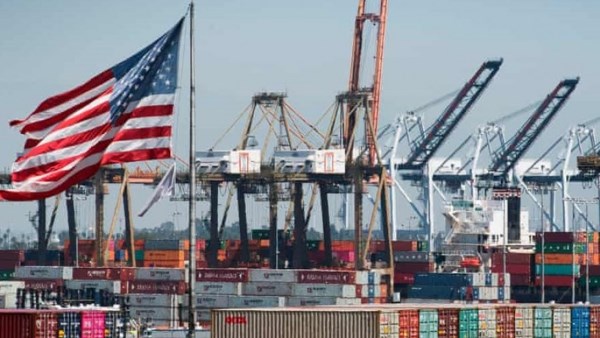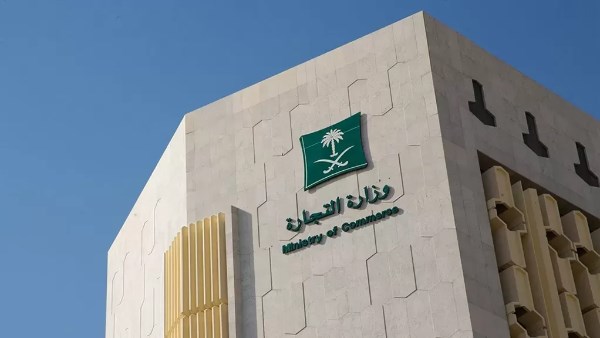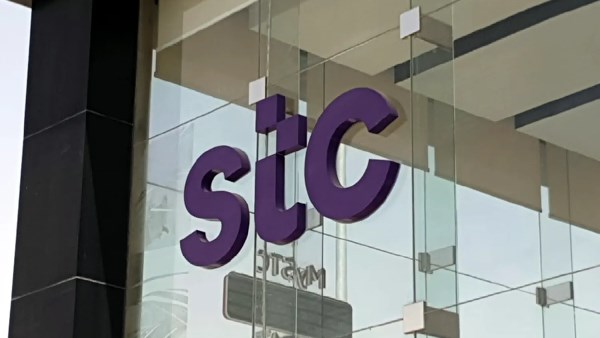
Moody’s expects continued external financial support from the International Monetary Fund (IMF),
Moody's downgrades Egypt's credit ratings to Caa1

Moody’s Investors Service (Moody’s) has today downgraded the long-term foreign and local currency issuer ratings of the Government of Egypt to Caa1 from B3 and changed the outlook to stable، concluding its review for downgrade initiated on May 9 2023.
Moody’s has also downgraded Egypt’s foreign-currency senior unsecured ratings to Caa1 from B3، and its foreign-currency senior unsecured MTN program rating to (P)Caa1 from (P)B3. In addition، Moody’s has downgraded the backed senior unsecured ratings of the Egyptian Financial Corporation for Sovereign Taskeek sukuk company to Caa1 from B3 and its program rating to (P)Caa1 from (P)B3 which are، in Moody’s view، ultimately the obligation of the Government of Egypt.
Worsening debt affordability trend
The downgrade reflects the government of Egypt’s worsening debt affordability trend and the persistence of foreign currency shortages in the face of increasing external debt service payments over the next two years، amid increasingly constrained policy options to rebalance the economy without exacerbating social risk.
The stable outlook captures the government’s track record of fiscal reform implementation capacity and the launch of the asset sale strategy، as well as Moody’s expectation of continued external financial support from the International Monetary Fund (IMF)، subject to compliance with reform conditionality، and from the Gulf Cooperation Council (GCC). At the Caa1 rating level، Moody’s expects the credit profile to be resilient to program delays and macroeconomic fluctuations as the economy rebalances.
Inhibiting private sector development
The local-currency ceiling was lowered to B1 from Ba3، and the foreign-currency ceiling to B3 from B2. The three notch gap between the local-currency ceiling and the sovereign rating reflects the public sector’s large footprint in the economy and significant financing requirement that inhibits private sector development and credit allocation، notwithstanding recent reforms to level the playing field with public sector entities. The two-notch gap between the foreign currency and local currency ceiling reflects transfer and convertibility risks given persistent foreign exchange shortages and weakening policy effectiveness.
RATIONALE FOR THE DOWNGRADE TO Caa1
The review for downgrade focused on the government’s capacity to arrest the drawdown in foreign currency liquidity، mitigate increasing borrowing costs، and its reform implementation capacity to ensure continued official support from official lenders، including the IMF and the GCC.
INCREASED EXTERNAL DEBT SERVICE REQUIREMENTS AMID PERSISTENT FOREIGN EXCHANGE SHORTAGES FUELS DEPRECIATION AND BALANCE OF PAYMENT RISK
Foreign exchange shortages persist، notwithstanding the improvement in the current account deficit to 1.2% of GDP at the end of fiscal 2023 (ended in June 2023) from 3.5% in fiscal 2022 on the back of sharp import compression and an improved services balance driven by strong Suez Canal and tourism revenue performances. Continued drawdowns in foreign currency liquidity through the monetary system (including the central bank and commercial banks) have resulted in a large net foreign liability position at $26 billion at the end of August، fueling the emergence of a parallel exchange rate trading at about EGP40/$1 as compared to the official rate at EGP30.9/$1، as well as material foreign exchange repatriation hurdles reported by investors benchmarked by global emerging market bond indices.
Persistent foreign exchange shortages increase refinancing and balance of payment risks in light of the economy’s mounting external debt service schedule in fiscal 2024 and fiscal 2025، with $26.3 billion and $25.8 billion (of which $10 billion and $13 billion، respectively، for the general government)، in addition to $28 billion in short-term debt. Refinancing risks for the government are partly mitigated by the significant share of short- and medium-term deposits from GCC countries accounting for almost 20% of total external debt، which Moody’s expects will be rolled over. Nevertheless، debt service coverage by foreign exchange reserves of $27.3 billion at the end of September risks weakening significantly over the next two years in the absence of measures to bolster the foreign exchange reserve buffer.
Asset sale proceeds
Looking forward، Moody’s expects the materialization of asset sale proceeds at the central bank to help restore the economy’s foreign currency liquidity buffer. These proceeds include the $1.9 billion in sales finalized on 11 July (of which $1.65 billion was denominated in foreign currency)، in addition to another $3.5 billion in the pipeline for fiscal 2024. Moody’s expects the International Finance Corporation (IFC، Aaa stable)، contracted on 18 June as asset sale advisor، to support the government’s private sector development strategy.
HIGH INFLATION AND RISING DOMESTIC BORROWING COSTS HIGHLIGHT MOUNTING POLICY CONSTRAINTS IN THE FACE OF MORE ACUTE SOCIAL RISKS
The pass-through from cumulative devaluations of the official exchange rate by almost 50% since February 2022 and negative real policy rates have undermined domestic price stability and fueled an increase in domestic borrowing costs over the review period، significantly weakening debt affordability as measured by interest/GDP and debt/revenue. Persistently high inflationary pressures have also led to a significant erosion in households’ purchasing power، increasing Moody’s social risk assessment
The government’s interest/GDP ratio، projected at 9.5% in the budget for fiscal 2024 from 7.7% recorded in fiscal 2023، and the projected interest/revenue ratio at over 50% are among the weakest among Moody’s rated sovereigns. Meanwhile، the general government debt/GDP ratio has increased to 95% in fiscal 2023 from 85.3% in fiscal 2022 mainly driven by valuation changes of the outstanding stock of foreign currency-denominated debt. Although the government of Egypt has a long track record of managing high debt levels and debt service costs، especially in the local currency market which accounts for over 90% of the interest bill، the sharp increase in the 91-day T-bill rate to 25.2% at the end of September from below 22% at the start of the review period exceeds previously recorded levels and highlights increasing refinancing risks، unless mitigated by higher revenue generation.
Primary surpluses
Looking forward، Moody’s expects the government to continue to generate primary surpluses while further expanding the tax and non-tax revenue/GDP ratios as a result of enhanced tax administration measures and tax collection procedures، and by channeling half of the asset sale proceeds directly to the treasury. However، already high urban inflation running at 37.4% in August compared to one year before constrains monetary authorities’ policy response capacity to mitigate the fallout from a renewed official currency devaluation which in Moody’s assessment is increasingly likely. Namely، Moody’s baseline scenario is for the official currency to depreciate to EGP35/$1 at the end of fiscal 2024 from EGP30.9/$1 currently، and further to EGP40/$1 at the end of fiscal 2025، keeping the projected debt/GDP ratio between 95% and 100% of GDP until fiscal 2026.
RATIONALE FOR THE STABLE OUTLOOK
The stable outlook captures Moody’s expectation of continued access to official financial support from the IMF under the $3 billion، 46-month Extended Arrangement signed on 16 December 2022، subject to compliance with reform conditionality، and from the GCC. At the Caa1 rating level، Moody’s expects the credit profile to be resilient to program delays and macroeconomic fluctuations as the economy rebalances، such as has been witnessed over the course of the review period.
Reform progress under IMF program
Moody’s expects that reform progress already achieved under the IMF program parameters، including on asset sales، the establishment of a level playing field (including the removal of tax exemptions for SOEs) and revenue enhancing measures to ensure debt affordability and sustainability، as well as the future adoption of currency flexibility that the government has committed to under the program parameters، will unlock financial support from other official lenders to mitigate liquidity risk، including in the form of guarantees to access capital markets at more affordable rates.
ENVIRONMENTAL، SOCIAL، GOVERNANCE CONSIDERATIONS
Egypt’s ESG Credit Impact Score of CIS-4 reflects high exposure to environmental، social and governance risks. The sovereign’s high debt burden، relatively low income levels and comparatively weak governance strength constrain its capacity to respond to environmental and social risks، although remedy strategies are being implemented.
Egypt’s exposure to environmental risks reflected in its E-4 issuer profile score mainly relates to high water risk through its water dependency on the Nile and the high degree of air pollution in densely populated cities. The Nile flow has been affected by the decreasing rate of annual rainfall، leading to very high fresh water resource depletion rates which the government seeks to address via the installation of desalination plants and the application of strict rules for the cultivation of water-intensive crops such as rice and sugarcane. As climate change intensifies، Egypt is also among the sovereigns most exposed to rising sea levels in the future، with up to 10%-25% of the population or GDP exposed، thus increasing its sensitivity to environmental risk.
Exposure to social risks (S-5 issuer profile score) has increased in the wake of the economic fallout from the Russian invasion of Ukraine، resulting sharp price increases and an erosion in households’ purchasing power. Low employment rates constrain the absorption of the young and expanding labor force، resulting in high youth unemployment rates at over 25% of the labor force، including among graduates. Relatively high poverty rates and gender inequality also contribute to social risks. As part of the government’s reform effort، social risks are being mitigated by a more targeted social safety net and social protection measures، although the breadth coverage remains relatively narrow.
Egypt’s governance profile score of G-4 reflects weak performance on voice and accountability and the perception of relatively few formal checks on the exercise of government power، including from the side of civil society. In the second half of the last decade، significant progress in the implementation of fiscal reforms denote improvements in fiscal policy effectiveness، albeit constrained by high debt levels and a large interest bill and after a period of relatively ineffective policy that had led to the build-up of imbalances. The government has more recently committed to transition to a flexible exchange rate regime to boost its competitiveness and expand its export base to enhance its external debt carrying capacity، but high inflation and already high domestic borrowing costs complicate the transition to an inflation targeting regime and a more flexible exchange rate.
GDP per capita (PPP basis، US$): 16،080 (2022) (also known as Per Capita Income)
Real GDP growth (% change): 6.6% (2022) (also known as GDP Growth)
Inflation Rate (CPI، % change Dec/Dec): 13% (2022)
Gen. Gov. Financial Balance/GDP: -6.1% (2022) (also known as Fiscal Balance)
Current Account Balance/GDP: -3.5% (2022) (also known as External Balance)
External debt/GDP: 32.8% (2022)





-1120252475029447.jpg)















